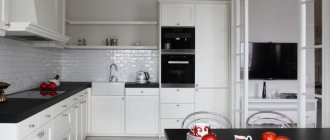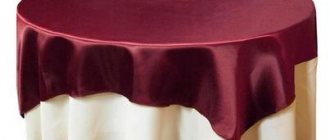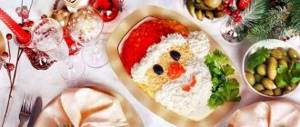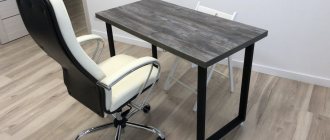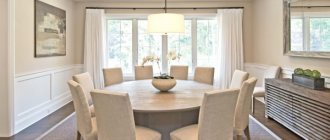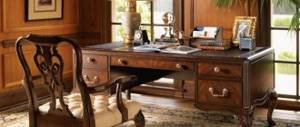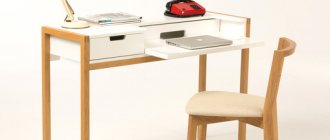New type of serving
Special accessories are made of textiles. This is a narrow fabric that is laid over a tablecloth. A guest who is served a dish with such an element will feel welcome in this establishment.
Cutlery layout is taken to the next level. Such accessories look original. The client himself decides whether he wants to use textiles under the plate, or remove them. But the impression that this method of decoration creates will definitely appeal to visitors. This type of decoration is used in many prestigious restaurants. Even the simplest institutions can afford decor, because the cost of producing goods is low.
The product is usually placed in the central part. In order for it to attract attention, its color should differ from the main shade of the tablecloth. Some establishments use several different colored options. How to arrange them so that they look neat and not flashy is decided by the owner of the establishment together with the designer.
Main brands and manufacturers
Manufacturers of billiard cloth produce materials of varying quality. They can be roughly divided according to the degree of professionalism of the players who will play at the table:
- for lovers;
- material for intermediate level;
- professional cloth.
Amateur
This category includes brands from Turkish and Chinese manufacturers. The Turkish brand Mirtex and the Chinese Manhattan are more suitable for home use or entertainment for establishments where the game does not pretend to be of any professional level.
You might be interested in: Characteristics and application of asbestos fabric
Cloth from a Chinese manufacturer
Mid-level
The Czech cloth manufacturer Europool produces material for playing American pool and Russian billiards. In terms of cost, this option is economical, but without loss of quality. The combination of wool and nylon provides good tension and a tight fit to the table. It can be successfully used in specialized billiard clubs.
Czech brand Europool 86 Pro
Since 1920, the Lithuanian factory Drobe has been producing high-quality material that is resistant to burning. The composition is dominated by wool fibers, which ensures comfortable play.
Also, the Czech brand Eurosprint offers inexpensive, high-quality cloth for clubs and bars. The composition of the materials is presented in two types:
- Eurosprint 45 Rus Pro - wool content 45%;
- Eurosprint 70 Rus Pro - cloth with 70% wool in more expensive materials;
- CARDINAL 165 - 45% wool, suitable for playing Russian pyramid and American pool.
Such brands are suitable for entertainment centers and leisure centers where players who are calm about the quality characteristics of the coating gather. In terms of service life, mid-level brands are not inferior to professional materials, sometimes even superior. But sometimes this happens at the expense of reduced gaming properties.
Cloth brand Eurosprint CARDINAL 165
What are the advantages?
In addition to style and beauty in a restaurant, narrow serving textiles have a protective function. If you spill gravy or something else on it during dinner, you can simply ask the waiter to remove the item. You either get a replacement, or you can continue to eat dinner without bedding.
Owners of serious restaurants have long noticed that the tendency to use a decorative element increases the interest of guests. Advantages of the tracks:
- Sophisticated look. The decoration complements the atmosphere of the establishment and makes the food counter more formal and festive.
- Creating a romantic atmosphere. If a couple is having dinner together, then you can use the decor to create a connecting piece between the two visitors. One line on the table connecting two plates looks very romantic. Many men order the item for the table during dinner when planning to propose to their beloved woman.
- Possibility to make the banquet hall longer and more voluminous. Thanks to the product, you can separate the two sides of the tabletop into zones.
- The stand, which is located under the decoration, is protected from damage, such as accidental scratches. Also, the countertop will not have to be washed from stains.
- Saving money. Buying napkins for all guests is more expensive than purchasing this popular product. If you order in bulk, you can seriously reduce the restaurant's budget.
- The process of decorating with textile “chips” takes waiters much less time than using other methods.
- Possibility to use the type as a cutlery stand. Due to this, the table is protected from overheating by hot dishes.
Original decoration is one of the opportunities to attract customers who have already seen a lot. Popular establishments use this method to add new emotions to visitors.
How to make a table runner
The path can be used in different ways - there are no rules to follow. Most often it is placed in the center of the table on a tablecloth, then the runner should be different in color from the main tablecloth. Dishes, as well as vases with flowers and fruits, are placed on the path.
If desired, you can use individual napkins (“plate plates” or place mats - these are napkins that are placed on the table in front of each person sitting).
Center of the table
Just doesn’t mean bad at all - one path along the table. Here, the contrast between the tablecloth and the runner, either in texture or color, is preferable.
If the table is round, make sure that the path is wide enough.
One track for two
A simple and effective option is one track, which is laid across the table for two guests. To prevent the table from looking overloaded, the recommended distance between the tracks is about 60 cm.
Letter "X"
Photo: www.weddingbee.com
Place two runners in an "X" pattern diagonally on a round table that seats 8 people. For a large table, try to leave enough space for two people in each section.
Creative table runner shapes
Photo: www.wrapables.com, susiecshoredesigns.typepad.com
In addition to the traditional rectangular shape of the table runner, you can use another one - in the form of flowers, vegetables or ladybugs. Such paths are best used for themed parties. For example, a runner in the shape of flowers is suitable for a “Fairy” birthday, and in the shape of a carrot – for an Easter table setting.
Photo: www.mundodastribos.com, www.allpeoplequilt.com
Creative materials for table runner
You don't have to use regular fabric if you want to surprise your guests. Quite the contrary - a table runner made of non-standard materials can highlight an event or holiday.
Table runner made of lace napkins
Place several large napkins at approximately equal distances.
Fill lengthwise with smaller napkins.
Sew the napkins together with threads where they overlap.
Path made from circles of fabric
Photo: Natalie Bonner
www.pieceandquilt.com
Mark circles on the fabric - there should be 3 types of them - all of different diameters.
Place the batting and stitch in a circle, slightly short of the edge. Leave a small hole in half of the circles you made. Leave a small piece in the other half.
Photo: Natalie Bonner
www.pieceandquilt.com
Magic tablecloth and demon-repelling copper
It was very important in what order family members were seated at the table - on weekdays and guests - on holidays. The head of the family sat under the icons, in the “red corner”, men were seated around him in accordance with proximity and seniority, and women sat opposite them, closer to the stove. During the festive meal, the table was covered with a tablecloth, which had magical properties - it seemed to separate the world of the living and the other world. In some villages of Belarus, housewives put cutlery under the tablecloth especially for the dead; in other places they believed that a coin placed under it would save the family from poverty, apparently thus paying off evil spirits. This superstition is alive and still in many villages of Russia. Wooden and earthenware dishes were placed on the table on weekdays, and copper dishes on holidays. A special feature of the feast was the appearance of a big brother on the table, which was supposed to unite the guests and hosts into one community. She was passed around in a circle in the same way as they did at the princely feasts of Ancient Rus', where she symbolized a common cause and a common faith. Copper itself was also given special significance - it was believed that it drives evil spirits out of the house, and the more festive dishes there are in the house, the less often troubles visit it.
Additional decor
Additional decor for the path can be not only vases with flowers, but also other decorative elements that suit your holiday - paper flowers can become a universal decoration for the path.
You should approach setting the festive table wisely, because a good housewife is famous not only for her delicious dishes, but also for her beautiful table decoration. A variety of napkins, flowers, and vases are very suitable for table setting, but the space under the plates remains empty. Store-bought runners or tablecloths often do not meet the tastes of housewives, so it is better to make a table runner quickly and easily with your own hands.
The table is decorated with a table runner, both separately and on top of the tablecloth. Paths come in a wide variety of colors, styles, and we will present the designs of the most interesting of them to your attention in this article.
Handmade
When creating a tablecloth with your own hands, there can be no restrictions a priori. Any embroidery, stickers, tinsel and decorations that match the theme are welcome. Skillful housewives embroider a white tablecloth with snowflakes made of paper and tinsel.
When choosing a tablecloth, you need to pay attention to the fabric from which it is made. Tablecloths made of linen and silk are considered the best, but their fragility makes practical and thrifty women think twice about it. A silk tablecloth in itself is a stunning decoration for a festive table, but is rarely used in everyday life. This should be taken into account when purchasing material.
Linen fabric requires careful care. Therefore, only those who are confident that all guests at the festive table will behave neatly should buy a tablecloth from it. You need to understand that such a tablecloth cannot be washed normally, and it will be almost impossible to remove stains. However, some housewives have come up with a way to extend the life of the tablecloth - using a tablecloth. This is a shorter tablecloth that will protect the center of the linen from stains.
The most popular fabric for making tablecloths is cotton. It is from this that runners and napkins are made for bars, cafes and restaurants. This is a practical material that is not afraid of stains or liquids. It is absolutely waterproof and also does not wrinkle. By choosing a cotton tablecloth, you can be sure that it will gracefully flow on the festive table, and after the celebration it can be washed.
The choice of drawings or patterns for decoration is also important. They can be made from paper, thread, fabric, decorative materials, and also painted with special paints. The most popular images are Christmas trees, mice, cones, fairy-tale characters, toys and various patterns.
How to crochet a table runner step by step with your own hands
Crochet runners are a popular and classic option. Such products look good together with lace napkins and do not burden the interior in any way. You can also come across the name “loin knitting”, since this technique is based on straight crochet with remaining “empty” loops, which makes the product soft and airy.
For a table runner measuring 30 by 72 centimeters we will need:
- 50 grams of cotton yarn for knitting napkins (white);
- hook No. 0.75 - 1;
To complete the central drawing you need:
To complete the edges of the track you need:
How to make a beautiful table runner with embroidery
Using embroidered runners is also a classic solution. Embroidery can be colored or plain, which goes well with the interior of the room.
In order to make an embroidered track we will need:
- Base fabric whose width is at least 2 times less than its length;
- Needles and other sewing supplies;
- Hoop of suitable size;
- The required thread colors and layout are shown in the photo below:
We make another path with our own hands using the patchwork technique
Rinner or patchwork runner is one of the types of table runners. This method is based on combining different pieces of fabric to create a multi-colored canvas for comfort and home decoration.
- For a sewn patchwork track measuring 122 by 35 we will need:
- 5 types of fabrics that overlap well with each other;
- Two strips measuring 25 by 45 centimeters;
- One 55 to 40,
- One is 45 by 45;
- And one for finishing edges;
- Measuring ruler and other sewing accessories.
After the fabrics for work have been selected and the workplace has been prepared, you can begin to sew:
- To begin with, from two fabrics (25 by 45 cm) we cut out 14 squares with sides of 8 centimeters (you should get 28 squares);
- Now we sew 1 squares of different colors together, placing a sewing line along one side (we fold the squares with the front sides facing each other). Seam allowance - the width of the sewing foot (6-7 mm);
- Iron the seams, folding the indents to the side of the darker fabric;
- We sew 2 strips from 2 squares into one large square from 4 small squares (to get a checkerboard pattern);
- Iron the resulting seam, turning it in both directions (you should get 7 large squares);
- Carefully trim the edges so that the side of the square is 14 centimeters;
- From fabric (size 55 by 40) we cut out 12 squares with sides of 14 centimeters;
- We place the resulting squares on squares of 4 parts and stitch along one side;
- Iron the seam towards a square of 4 squares;
Lay it out as shown in the photo:
We get a line from (large square) + (square from small squares), to the square from small squares on the opposite side we sew another large square so that it turns out: (large square) + (4 square) + (large square). From a piece of fabric (45 by 45), cut out 5 squares with sides of 14 centimeters. Cut 5 squares into 10 identical triangles.
We lay out the triangles as shown in the photo:
Sew one triangle at a time (in one line) from the side of the large square. You should get: (Triangle)+ (large square)+(4 square)+(large square)+(Triangle). We sew the resulting strips together.
We cover the edges with finishing fabric.
Advantages and disadvantages of decking paths
Paths made from terrace boards (decking) are a modern alternative to wooden coverings and paving slabs, as well as a fairly practical solution for decorating a summer cottage or local area. Being in an open area and exposed to various weather influences, the material for paths must have high strength and be resistant to external factors.
Decking has such properties in full, which not only easily withstands the effects of atmospheric phenomena, but is also not subject to mechanical damage. Such garden paths can be washed with special products, they do not slip in winter, fit well into any design of the site, and are also easy to install.
- The main advantages of this coating include:
- Resistant to damage. This board tolerates moisture, frost, and exposure to ultraviolet radiation well. At the same time, it does not crack, does not lose shape and does not fade.
- Easy to install. The tracks are easy to install without special knowledge and skills, and, if necessary, they can be disassembled and moved to another place or put away for the winter.
- Durability. With proper care, the decking service life is designed to last several decades.
- Sustainability. If the installation technology was fully followed, then such a garden element will not succumb to deformation and will maintain a flat surface on any soil.
- From decking you can assemble structures of any complexity , based on your imagination, preferences and budget.
- Among the disadvantages of decking boards it should be noted:
- Intolerance to high temperatures. This material is not suitable for covering the surfaces of baths and saunas, where the air temperature rises above +80°C.
- Sensitivity to prolonged immersion in water. With constant exposure to moisture, decking quickly deteriorates and loses its aesthetic appearance.
- It is not recommended to lay panels in poorly ventilated areas without exposure to sunlight due to the likelihood of mold.


